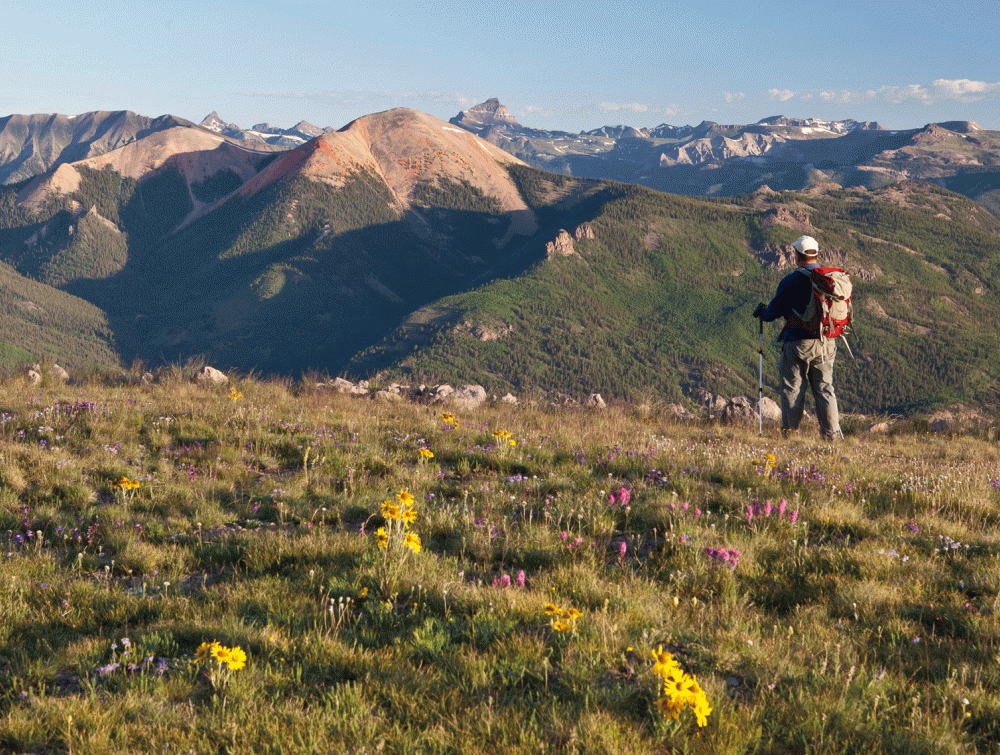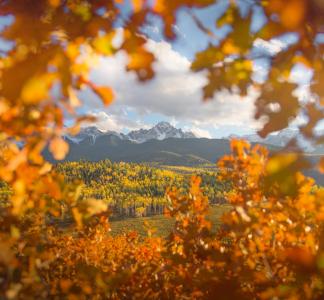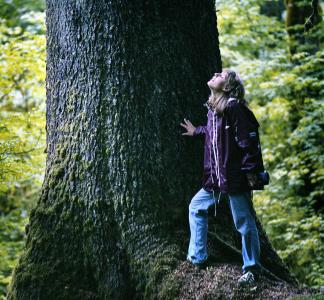Continental Divide's priceless wilderness would gain protection under new bill

Continental Divide National Scenic Trail, CO.
Bob Wick, Bureau of Land Management.
Bill would establish new federal wilderness areas
The sensory delights of the Continental Divide are varied and bracing--from dramatic mountain peaks and the snowmelt they channel to rushing creeks in the valleys below to regal, dark-jacketed spruce-fir stands harboring wild elk, lynx and peregrine falcons.
Features like these in some of Central Colorado's most stunning landscapes would be secured against damaging development, reckless off-road vehicle use and other threats under a bill introduced by Rep. Jared Polis and Senator Michael Bennet on Jan 24. The legislation would add protections to some 96,000 acres in what Rep. Polis has called "the iconic playground" of the state, protecting lands in a region that has lately seen explosive population growth.
The Continental Divide Recreation, Wilderness and Camp Hale Legacy Act would establish new federal wilderness areas in the Williams Fork Mountains, Tenmile Range, and Hoosier Ridge, and expand the existing Holy Cross, Eagles Nest and Ptarmigan Peak wilderness areas. It would also set aside areas for outdoor recreation, historic preservation and protective buffers for a land bridge over Interstate Highway 70 to preserve safe wildlife migration corridors.
Dozens of local businesses have signed on in support of the bill, along with county- and town-level governments. What is needed to move the proposal forward is political will from both sides of the aisle, in a partisan political climate that has made conservation a tough sell in Congress.
 We will be hard at work in the months ahead trying to move this legislation forward, but the rewards are many. Take a look at some of these photos for a sense of what the Continental Divide has to offer.
We will be hard at work in the months ahead trying to move this legislation forward, but the rewards are many. Take a look at some of these photos for a sense of what the Continental Divide has to offer.
Key wildlife corridors and habitat protected
The central Rocky Mountains are a key migration corridor for wildlife moving from Canada to Mexico. The landscape here is home to bighorn sheep, moose, lynx, black bears and elk, and the Continental Divide proposal would establish two wildlife conservation areas totaling nearly 12,000 acres to protect wildlife habitat and migration corridors near Loveland Pass and in the Williams Fork Mountains.
Adjacent to the protected landscape that Polis and Bennet's Continental Divide proposal provides (the proposed Williams Fork Wilderness), a first-of-its-kind overpass and underpass system allows mule deer, elk and other animals to cross Highway 9 with less risk of injury or death. This is testament to the importance of the area for wildlife, and various land protection designations in the bill would help buffer and provide access to similar land bridges.
The Continental Divide bill also protects key habitat for the greater sage-grouse, which is sensitive to road-building and other development activity encroaching into its mating area.
Outdoor recreation opportunities preserved for locals and visitors
If there's one thing that unites Colorado, it's an abiding love for the outdoors. And these aren't just people who admire nature in the pages of coffee table books, either; some 71 percent of the state's residents participate in outdoor recreation, about as many as vote in national presidential elections(which is to say, a lot of them). That activity is a huge economic force, supporting 229,000 jobs and generating $28 billion in consumer spending annually.
The outdoor recreation industry is such an inextricable part of Colorado's culture (and economic bottom line) that the celebrated Outdoor Retailer show recently relocated to Denver, in part a nod to the state's strong tradition of protecting and enjoying public lands, what Governor John Hickenlooper calls "the defining characteristic of Colorado."
Fittingly, the Continental Divide proposal would preserve a range of outdoor recreation playgrounds for locals as well as visitors who drive the state's robust tourism industry. This includes part of the Continental Divide National Scenic Trail, product of a decades-old campaign that has been called one of the largest conservation efforts in U.S. history and still draws hikers and horseback riders from around the country.
Eagle and Summit counties, which contain the tracts covered in the bill, are skiing hotbeds, and backcountry skiing as well as snowshoeing, mountain biking and other recreational activities would be highlighted in a Recreation Management Area along the Tenmile Range, complementing the proposed wilderness areas' additional opportunities for recreation like hiking, hunting and fishing.
Nation's first national historic landscape at Camp Hale
The area is home to outdoor recreation and our military history, too. Activated in 1943, the U.S. Army's 10th Mountain Division made a name for itself fighting through the rugged contours of the North Apennine mountain range--just the sort of terrain that was their specialty. Beginning years before they helped bring German forces to their knees in Italy, soldiers in that light infantry division cut their teeth at Camp Hale, most of which lies in Colorado's White River National Forest. There, troops learned to ski, climb and snowshoe, at one point filling a 1,000-building complex in a grueling training environment some called "Camp Hell."
Under the Continental Divide bill, Camp Hale would be designated America's first ever national historic landscape, a special hybrid classification that combines the mission of educating visitors with that of preserving terrain for outdoor recreation on roughly 30,000 acres surrounding the camp.
Colorado veterans have advocated for Camp Hale's proposed new status, but beyond the site's significance in military history, it has been called the birthplace of Colorado's outdoor recreation industry. There may be no better salute to that legacy than its inclusion in a proposal that preserves such a diversity of well-loved wildlands.



